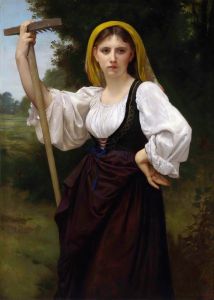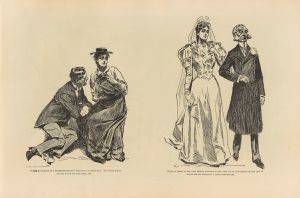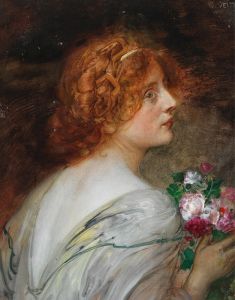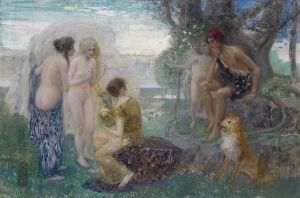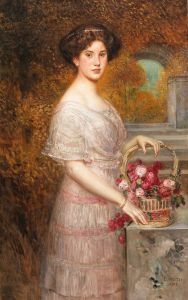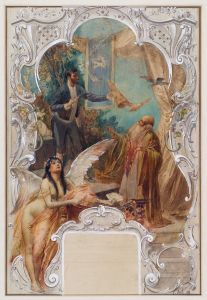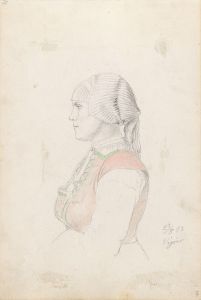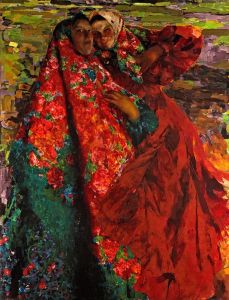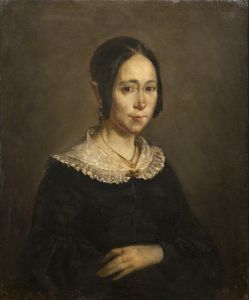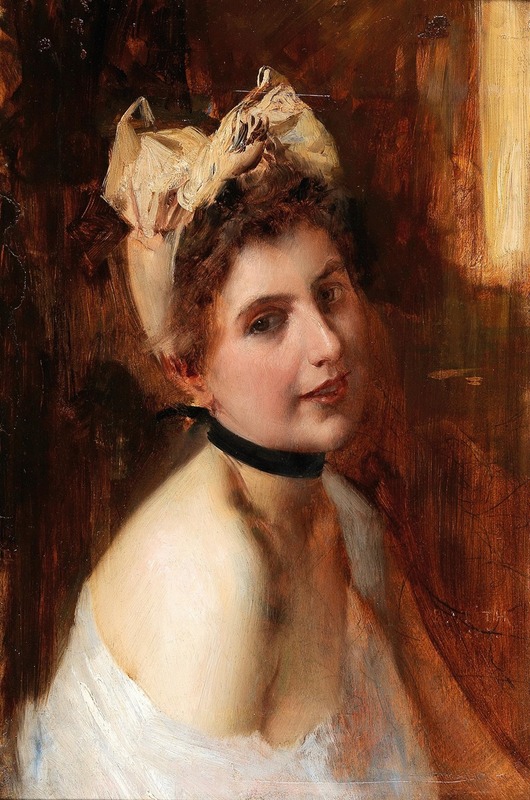
Viennese Girl
A hand-painted replica of Eduard Veith’s masterpiece Viennese Girl, meticulously crafted by professional artists to capture the true essence of the original. Each piece is created with museum-quality canvas and rare mineral pigments, carefully painted by experienced artists with delicate brushstrokes and rich, layered colors to perfectly recreate the texture of the original artwork. Unlike machine-printed reproductions, this hand-painted version brings the painting to life, infused with the artist’s emotions and skill in every stroke. Whether for personal collection or home decoration, it instantly elevates the artistic atmosphere of any space.
Eduard Veith was an Austrian painter known for his portraits, allegorical themes, and decorative works. Born on March 30, 1858, in Neutitschein, Moravia (now Nový Jičín, Czech Republic), Veith became a prominent figure in the Viennese art scene during the late 19th and early 20th centuries. He studied at the Academy of Fine Arts in Vienna, where he honed his skills and developed a style that combined elements of realism and symbolism.
One of Veith's notable works is "Viennese Girl," a painting that exemplifies his ability to capture the essence of his subjects with elegance and finesse. Although specific details about the painting "Viennese Girl" are limited, it is representative of Veith's broader body of work, which often featured portraits of women. His portraits are characterized by their attention to detail, delicate use of color, and the ability to convey the personality and mood of the sitter.
Veith's work was influenced by the cultural and artistic movements of his time, including the Vienna Secession, which sought to break away from traditional academic art and embrace more modern, expressive forms. While Veith was not a member of the Vienna Secession, his work shares some of its aesthetic qualities, such as an emphasis on decorative elements and a focus on the individual.
Throughout his career, Veith received numerous commissions for both public and private works. He was particularly renowned for his ceiling and wall paintings in various theaters and public buildings across Vienna. These works often featured allegorical and mythological themes, showcasing his ability to blend narrative content with decorative artistry.
Veith's contribution to the arts extended beyond his paintings. He was also involved in teaching and mentoring young artists, helping to shape the next generation of Austrian painters. His influence can be seen in the works of his students and contemporaries, who admired his technical skill and artistic vision.
Despite the lack of extensive documentation on "Viennese Girl," the painting remains an important part of Eduard Veith's legacy. It reflects his mastery of portraiture and his ability to capture the spirit of Viennese culture during a time of significant artistic innovation. Veith's work continues to be appreciated for its beauty and craftsmanship, and he is remembered as one of the notable artists of his era.
Eduard Veith passed away on March 18, 1925, in Vienna, leaving behind a rich legacy of art that continues to be studied and admired. His paintings, including "Viennese Girl," serve as a testament to his skill and his contribution to the cultural heritage of Vienna.





